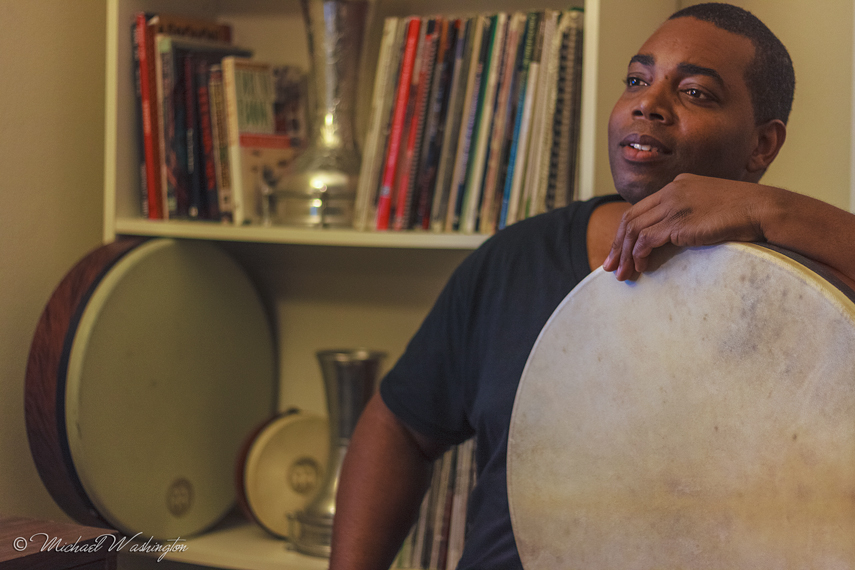 A fresh self portrait for the new year!
A fresh self portrait for the new year!
Happy new year everybody!
After coming off of a New Year's Eve concert with my band Wahh (an East meets West fusion Indian classical/folk & western R&B, rock, jazz and funk) and finally having a day or two of relatively cool and dry weather here in South Florida, it's a perfect time to play my frame drums! I do say relatively because it only got down to maybe 60oF last night and humidity of around 80% (yep, that's "Florida cold" ;) and today with a high of only 78oF. My Meinl frame drums with goat and calf skin heads are holding a higher pitch at the point where they are speaking very well along with a better separation between the bass of the doum, the highs of the tek & ka and this beautiful tone in the sweet spot. They are actually resonating fully to where just a slight touch to the shell will awaken the harmonics of the shell and head both together. If you have ever been around a camp fire with a very well headed drum (with skin), you know exactly what I am talking about!
 18" Meinl Mizhar headed with thin calfskin
18" Meinl Mizhar headed with thin calfskin

the rhythms out loud while counting on the hand.
 Tabla on the left and mridangam on the right.
Tabla on the left and mridangam on the right.
For example: for 1 beat we would say Ta, for 2 Ta ka, 3 Ta ki ta, 4 Ta ka di mi, 5 Ta di ki na thoum,
6 Ta ri ki ta ta ka and 7 Ta ka di mi ta ki ta.
There are also other syllables that can be changed out but just to start, these are fine for the basics.
Music in general uses a combination of math and the science of physics to create sound but within Indian music, the compositions are very mathematical and the rules for the rhythm cycle and structure are very strict so it forces you to creatively improvise by dividing the beat cycle into smaller parts then using fractions to change the speed of the rhythm within the the beat cycle. Is your head exploding yet? Take a deep breath haha!
Wahh playing "Kavi"
So for example, the composition I am working on is in 7 so it's a 7 beat cycle. Now, within that cycle, sure we can just play it as 7 but also as 4+3, 3+4, 5+2, 6+1 etc. You can even take multiples of 7 and divide those up and create a longer phrase but it is very important that the numbers add up correctly and our rhythm phrase
will always come back to 1.
Stay tuned here for some follow up video on how to use konnakol, and some playing examples of what I have so far in this composition which will be a fusion of Indian compositional ideas and north African/middle eastern instruments and the belly dance rhythm Darw Hindi which is in 7!
I am looking to have it morph into it's own
living work of art eventually!
